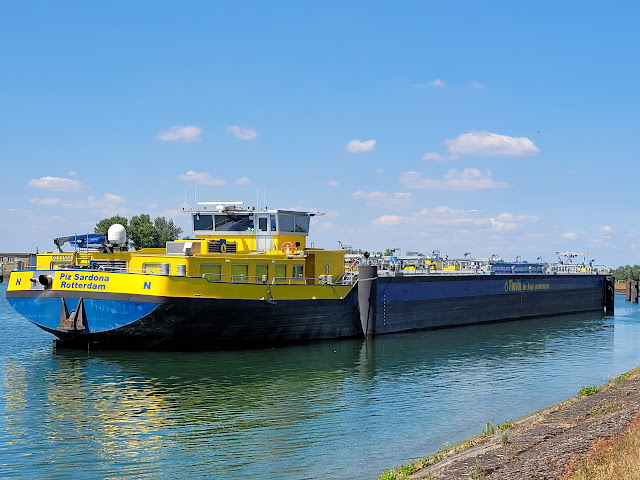 After the varied attractions of Alice a day's drive south saw us settling for the night in a roadside free camping area before continuing on and then heading west to Kings Creek Station en route to the eponymous Canyon. 800,000 acres of barren land are used to raise cattle and camels although the accommodation now provided to travellers is the more lucrative enterprise. Friendly staff welcomed us and a Canadian guy on a quad took a lot of trouble to find us a quiet pitch in the thoughtfully laid out and spacious camp area. We walked up at sunset to watch the camels collect at a waterhole and enjoyed a peaceful night with hook up courtesy of the station generator.
After the varied attractions of Alice a day's drive south saw us settling for the night in a roadside free camping area before continuing on and then heading west to Kings Creek Station en route to the eponymous Canyon. 800,000 acres of barren land are used to raise cattle and camels although the accommodation now provided to travellers is the more lucrative enterprise. Friendly staff welcomed us and a Canadian guy on a quad took a lot of trouble to find us a quiet pitch in the thoughtfully laid out and spacious camp area. We walked up at sunset to watch the camels collect at a waterhole and enjoyed a peaceful night with hook up courtesy of the station generator.King's Canyon was a geological marvel and was enjoyed over a four hour walk which enabled us to see its finer features from both close up and across the dramatic chasm.
We lingered an extra day to enjoy the surroundings before another journey through the arid but far from barren landscape brought us to Yulara the central settlement for visiting Uluru and Kata Tjuta - known to most as Ayers Rock and the Olgas.
The camping was not as busy as we had expected and we decided to delay our entry in to the Park itself to get the full benefit of the 3 day ticket validity so walked in to the resort to nose at the accommodation, shops and galleries - amazing to think that all this relates solely to the existence of a large rock.
Our first proper views were under a cloudy sky which failed to reveal the true splendour of the monolith so we decided to visit the cultural centre during which time the winter sun broke through. A walk up to the Mutitjulu waterhole gave us a chance to experience the rock itself close up and the perimeter road took us round to the starting point for the ascent. I decided to tackle the steep climb as it may be closed indefinitely in the future and arrived with bursting lungs on the rolling summit rocks to eventually arrive at a plaque giving distances to the various mountains visible way out on the horizons - I felt that seeing the land laid out below in such an awe inspiring way justified the climb as it really hammered home the generations of skill and knowledge required by indigenous people to live in such a harsh landscape.
The Olgas are an equally fascinating feature with 36 large domes (once thought to comprise a monolith 10 times larger then present day Uluru) providing more unforgettable views, two good walks and a photographer's dream.
The chance to watch Uluru change colour and character as the sun set provided the perfect ending to a remarkable few weeks in the Red Centre which we have found far more diverse and captivating than we had expected - whilst it must be challenging in the heat of summer the almost endless blue skies, warm days and comfortably cold nights of winter have suited us well.
The SA border is a few hours drive away after which Coober Pedy beckons and then we turn west once more to complete the final chapter of what has been a wonderful trip.
Photos of this remarkable area lie here and our locations here - the recent glitch may have been down to user error although I am not fully convinced.
Slides top right look back at our first visit to Perth





